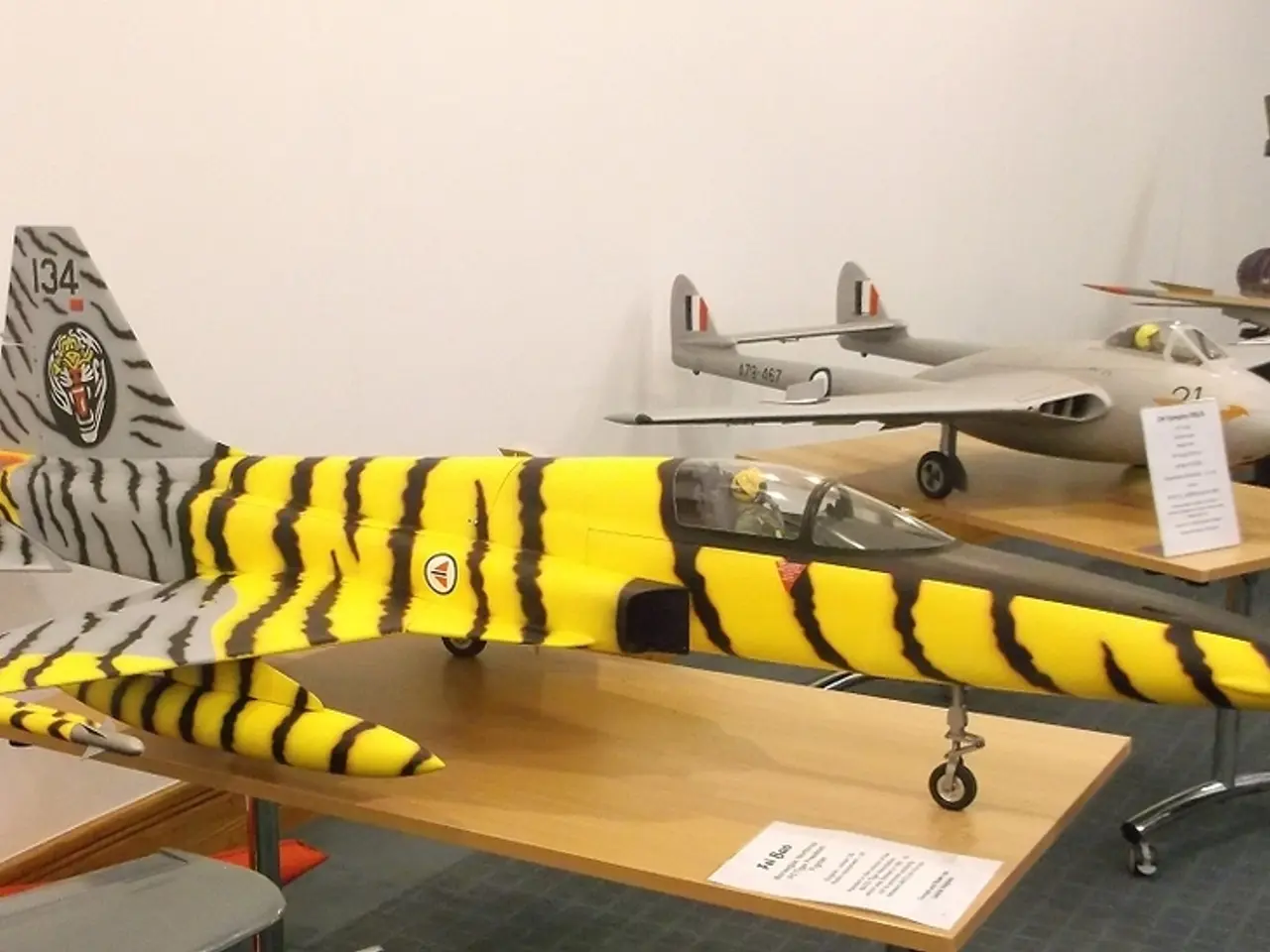Ascending to the Aviation of Tomorrow
Airbus, a leading name in the aviation industry, is making significant strides in advancing sustainable aviation technology. The company is focusing on various aspects, including wing design, engine technologies, hybridisation, electrification, materials, and aircraft systems, to enhance efficiency, reduce emissions, and improve performance.
Wing Design
One of the key areas of focus is the development of semi-morphing wings and dynamic winglets. These innovative wing structures optimise aerodynamic performance by adapting flight surfaces in real-time, expanding the operational envelope at both low and high speeds. The results from flight and ground tests have confirmed excellent handling and system robustness.
Airbus is also using advanced carbon fibre reinforced plastics (CFRP) in the outer wing box, which delivers a weight reduction of about 5.6%. This contributes to lighter, stronger wings and reduces emissions. In widebody aircraft like the A350, Airbus has refined wingtip design with curved, taller, and squarer wingtips, broadening span load and reducing drag, which improves fuel efficiency and range.
Engine Technologies, Hybridisation & Electrification
Airbus is integrating high voltage direct current (HVDC) electromechanical actuation for control surfaces, replacing traditional hydraulic systems. This contributes to weight savings, more efficient power use, and enhanced reliability. The company's research includes hybrid-electric propulsion systems as part of broader electrification efforts to reduce carbon emissions.
Materials
Advanced composites such as CFRP are extensively used in wings and key structural elements for weight reduction and strength enhancement. New manufacturing techniques like out-of-autoclave curing and one-shot multi-spar torsion boxes streamline production while cutting costs and weight. These materials improve fatigue resistance, allow higher load tolerance, and facilitate aerodynamic optimization through novel wing morphing technologies.
Aircraft Systems
Advanced flight control laws incorporated in the new wing designs enable more precise handling and performance optimization. Integration of embedded SATCOM antennas, HVDC power systems, and robust systems integration rigs ensures reliable communication, power management, and flight surface control suited for future electric and hybrid aircraft architectures.
Environmental Impact
These innovations aim at substantially reducing noise, CO2, and NOx emissions, setting a new benchmark for environmentally responsible regional and commercial aviation operations. The EcoPulse demonstrator, a joint project between Airbus, Daher, and Safran, provided significant insight into the use of lithium-ion batteries onboard an aircraft with a high-voltage network. Airbus is also exploring the potential of solid-state batteries for the next generation of aircraft.
In summary, Airbus's pioneering work combines composite materials, adaptive wing structures, electrified systems, and advanced aerodynamics to create lighter, more efficient, environmentally friendly aircraft that push the boundaries of current aviation technology while maintaining safety and reliability standards. The new Airbus aircraft's engines will consume 20% less fuel than current models, and the company is adopting a holistic approach to integrating smart automation in the aircraft and ground operations. The aviation industry has progressed through various models of engines, with today's turbofan engine offering improved fuel efficiency and less noise. Airbus is designing a common digital platform for a future next-generation single aisle, ensuring safer and more efficient operations. CFRTP is easier to reuse and recycle than other materials.
Science and technology play significant roles in Airbus's initiatives for sustainable aviation. The company is developing semi-morphing wings and dynamic winglets, optimizing aerodynamic performance with real-time adaptation, using advanced carbon fiber reinforced plastics (CFRP) for weight reduction, and integrating high voltage direct current (HVDC) electromechanical actuation for more efficient power use (science). Airbus also researches hybrid-electric propulsion systems and solid-state batteries as part of broader efforts to reduce carbon emissions (technology).




